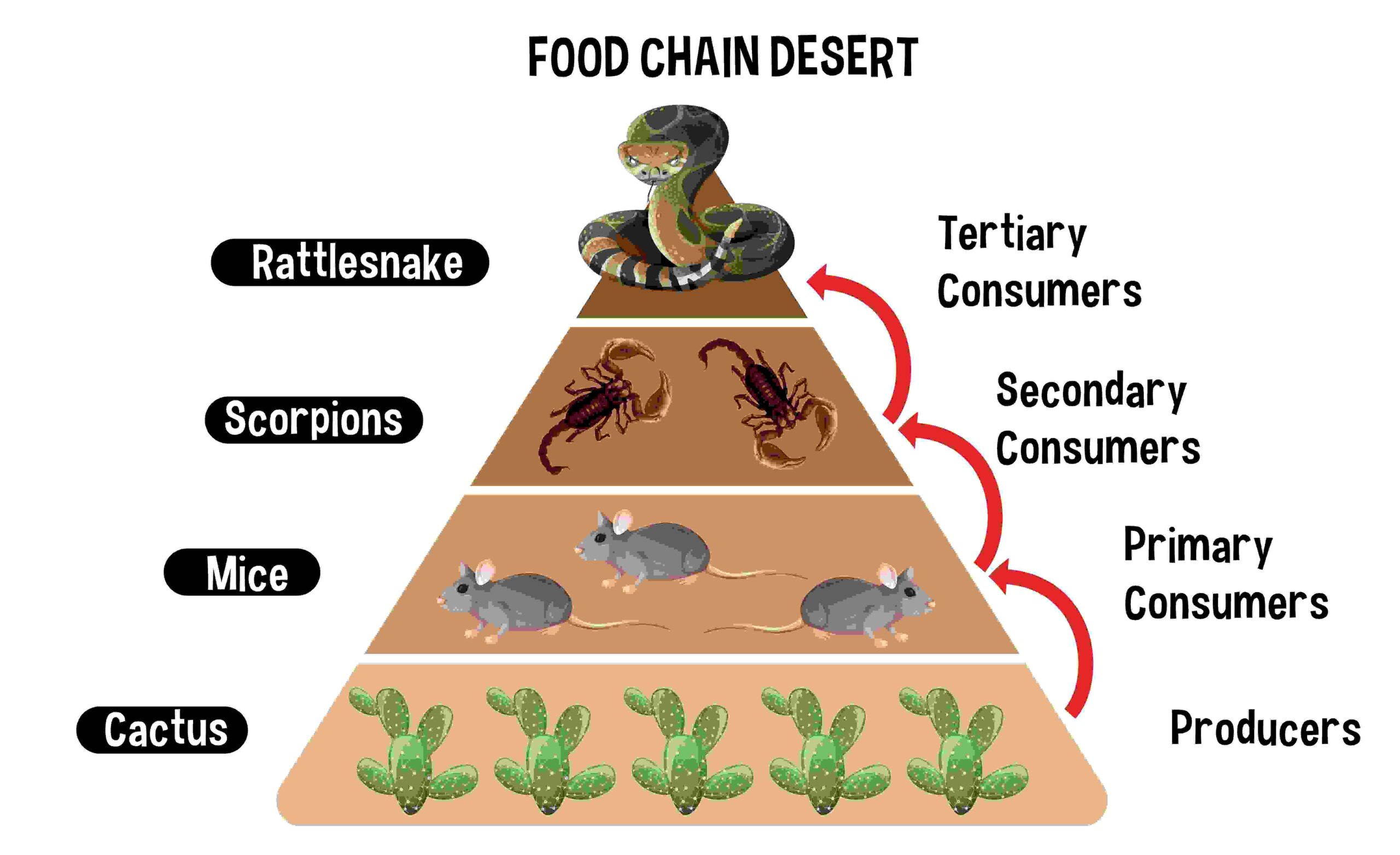Deserts are some of the most extreme habitats on Earth, with scorching temperatures, scarce rainfall, and limited vegetation. Despite these challenges, deserts host a fascinating web of life where every plant and animal plays an important role. This interconnected web is called the desert food chain — a system that keeps the ecosystem balanced and functioning.
The Foundation: Producers in the Desert
At the base of the desert food chain are producers, mainly plants that create their own food through photosynthesis. Common producers in deserts include cacti, desert grasses, shrubs, and small flowering plants. These plants store water in their tissues and grow slowly to survive the harsh conditions. They provide the primary source of energy for herbivores.
Primary Consumers: Herbivores
The next level consists of primary consumers — animals that eat plants. In deserts, common herbivores include insects, rodents like kangaroo rats, jackrabbits, and even desert tortoises. These animals have adapted to survive with minimal water, often obtaining moisture directly from the plants they consume.
Secondary Consumers: Carnivores
Secondary consumers are carnivores that feed on herbivores. Lizards, snakes, and small birds such as roadrunners are examples of secondary consumers in desert ecosystems. They help regulate herbivore populations and keep the balance in check.
Tertiary Consumers: Top Predators
At the top of the desert food chain are tertiary consumers — the apex predators. These include coyotes, bobcats, hawks, and eagles. These predators have few natural enemies and play a crucial role in controlling populations of smaller animals, preventing overgrazing and resource depletion.
Decomposers: Nature’s Recyclers
Once plants and animals die, decomposers such as fungi, bacteria, and scavengers like vultures break down organic matter. This process returns essential nutrients to the soil, allowing new plants to grow and restarting the cycle of life.
Importance of the Desert Food Chain
The desert food chain demonstrates how even in the harshest environments, life is interconnected. A disruption at any level — such as a decline in plant life due to drought or human activity — can affect every organism in the chain. Maintaining the balance is vital for desert survival and biodiversity.
Business Services
Business Services
Business Services
Business Services
Business Services
Business Services
Business Services
Business Services
Business Services
Business Services
Business Services
Business Services
Business Services
Business Services
Business Services
Business Services
Business Services
Business Services
Business Services
Business Services
Business Services
Business Services
Business Services
Business Services
Business Services
Business Services
Business Services
Business Services
Business Services
Business Services
Business Services
Business Services
Business Services
Business Services
Business Services
Business Services
Business Services
Business Services
Business Services
Business Services
Business Services
Business Services
Business Services
Business Services
Business Services
Business Services
Business Services
Business Services
Business Services
Business Services
Business Services
Business Services
Business Services
Business Services
Business Services
Business Services
Business Services
Business Services
Business Services
Business Services
Business Services
Business Services
Business Services
Business Services
Business Services
Business Services
Business Services
Business Services
Business Services
Business Services
